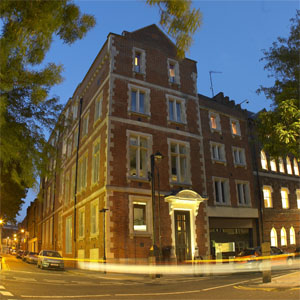St Paul's Hospital London
Initially in Red Lion Square
The founder of St Paul’s Hospital was a surgeon, Mr Felix Vinrace. He raised money for:
... founding a hospital in Central London for the treatment of the many forms of skin and cognate diseases so prevalent in our midst.
 The hospital opened on 15 August 1898 at 13a Red Lion Square, London with a large inscription placed on front reading "For Skin and Genito-Urinary Diseases”. Understandably, this caused considerable concern to the other residents of Red Lion Square!
The hospital opened on 15 August 1898 at 13a Red Lion Square, London with a large inscription placed on front reading "For Skin and Genito-Urinary Diseases”. Understandably, this caused considerable concern to the other residents of Red Lion Square!
The surgeons were Felix Vinrace and Alfred Allport, There were 6 beds for inpatients. In the first year, there were 1,142 new patients. The first surgical case was a man who had a penile lesion excised. He subsequently required a radical penectomy there 63 years later. The assumption being, one supposes, that the initial lesion was an HPV wart. In 1891 it was noted in the minutes that 16 operations were performed with no fatalities.
During the First World War, St. Paul's became one of the 22 selected London Hospitals to give free secret treatment for venereal disease. In 1916, 20 inpatients were treated for normal skin diseases and 606 for venereal disease!
With 20,000 outpatients per year, expansion was needed and, in 1919, the British Lying-In Hospital, Endell Street was acquired for £15,000. After a prolonged refurbishment, the Lying-In Hospital closed on Saturday 7 April 1923, St Paul’s Red Lion Square closed the same day and, on Monday 9 April 1923, re-opened at Endell Street.
In 1926, a cystoscopy room was opened and, in 1927, the hospital was renamed "St. Paul's Hospital for Diseases (including Cancer) of the Genito-Urinary Organs and Skin".
In 1948, St Paul's and St Peter's Hospitals were amalgamated into the Institute of Urology to be joined, in 1952 by St Philip's, when the hospitals became known informally as "the three Ps".
St Paul's Hospital closed in 1992 when services were moved to the Middlesex Hospital.
← Back to Hospitals and Institutions Room